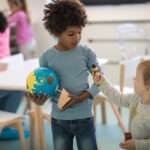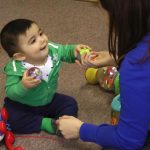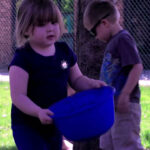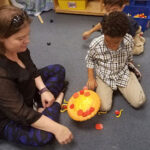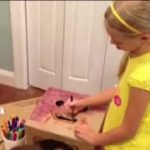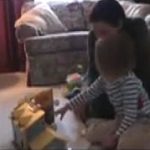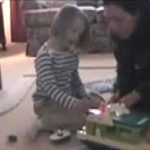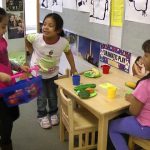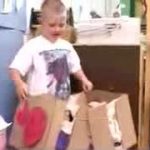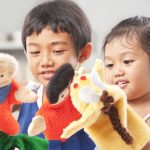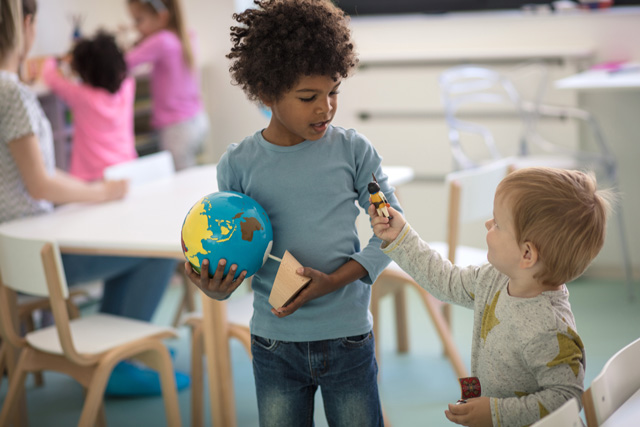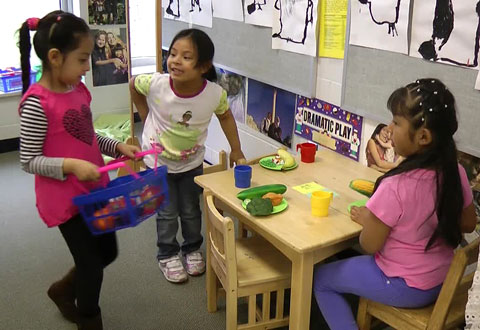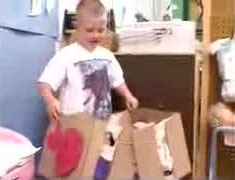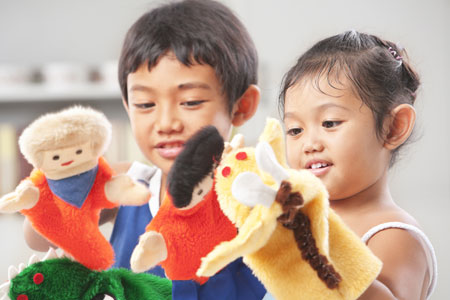Keyword: Pretend Play
-
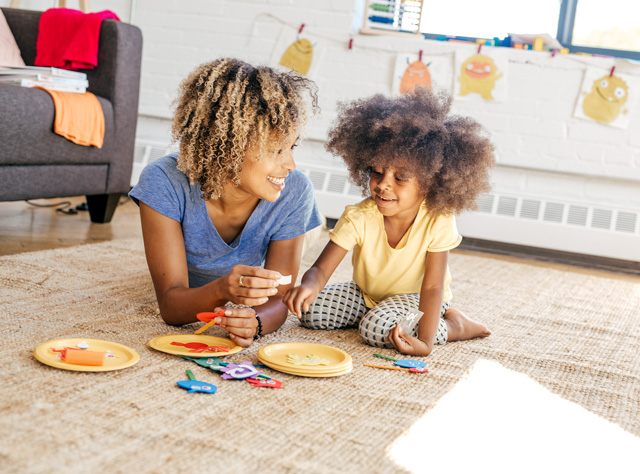
Play Along: Following Your Child’s Interests at Home
Young children love to play. Child-led and open-ended play helps young children develop and learn. Child-led means that the child chooses the activity or the topic and is the leader of the play. Leading play comes naturally to a young child. In this blog, we will describe some strategies for expanding a child’s play in…
-
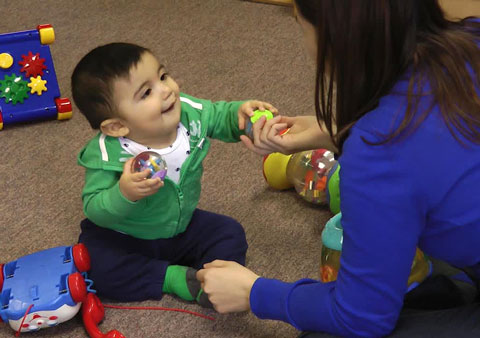
Creativity, Inventiveness, and Imagination
This section of the guidelines describes how infants and toddlers become more purposeful when engaging with their environment.
-
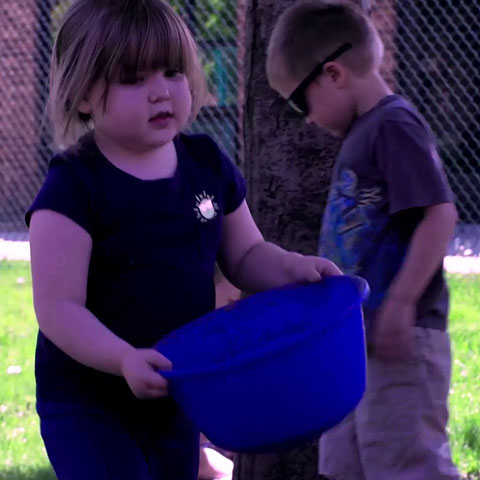
The Blue Bowl
In this video, we see a large blue mixing bowl spark children’s interest and lead to this type of complex play. The children work together in a group to reach a common goal of making “soup” in a bowl. They explore the outdoors and find several materials to put in the blue bowl for their…
-
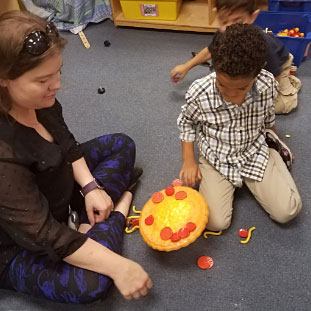
The Pizza Project: A Delicious Learning Opportunity
Sarah KuhlemeierRegional Office of Education No. 8 Preschool ProgramStephenson and Jo Daviess counties The Pizza Project was completed in a mixed-age, blended Preschool for All classroom. The classroom was an inclusive classroom with a diverse group of learners, including children with disabilities, English language learners, and children identified as at-risk. Several children had language delays,…
-
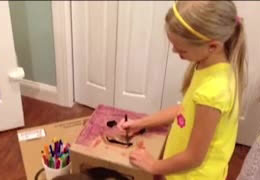
Pretend Play with Big Boxes
Pretend play is also called “make-believe,” “dramatic play,” or “symbolic play.” Pretend play contributes to young children’s development and well-being in a variety of ways. This video shows two examples of children’s pretend play.
-
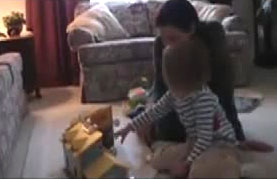
Going Camping
Three-year-old Ellie and her mother are playing with familiar toy family figures, a dollhouse, furniture, and a camper. By listening carefully to what Ellie says as they play, her mother discovers things that she can help Ellie understand in areas such as counting, good manners, and nutrition.
-
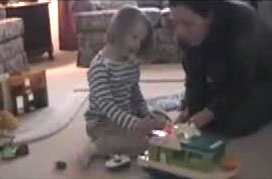
The Doggie and the Shark
In this clip, 3-year-old Ellie and her mother engage in pretend play with small figures and boats. Joining Ellie in pretend play allows her mother to model play skills, extend pretend play, help build vocabulary, and promote problem solving skills.
-
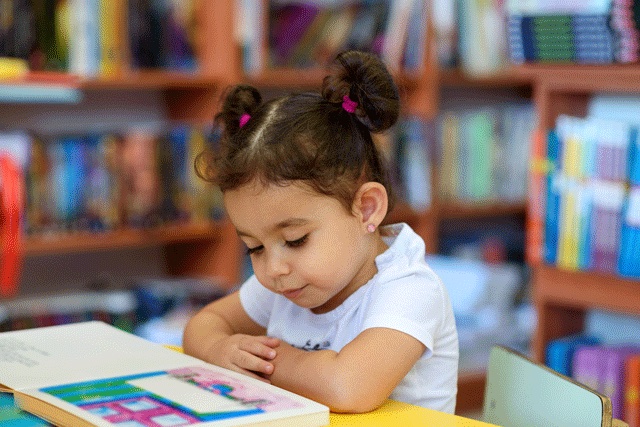
Super Story Time
“Tell me a story!” or “Read it again!” You have probably heard those words spoken by a child you know. Go ahead and answer, “Yes!” Cuddling up with a good book is a great way for children and adults to spend time together.
-
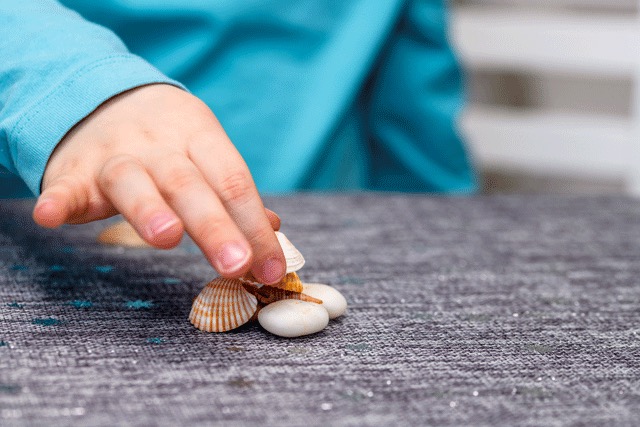
Cherishing Children’s Treasures Can Create Many Opportunities to Learn
Adult definitions of what makes something a treasure may differ from what a child would consider a treasure. Children find treasures everywhere. Some treasures that excite children are sparkly sequins for a craft project, pebbles, pinecones, seeds, beloved toys, or a tattered blanket. The items that capture the attention of children may be different than…
-
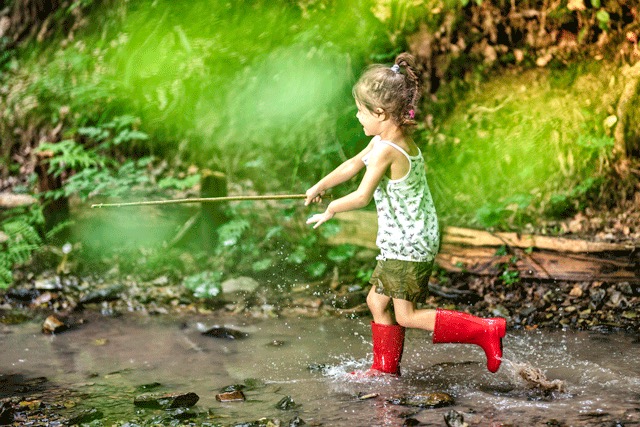
Playing with Sticks: A Childhood Tradition
“It’s just a stick! You’ll find another one.” But the child knows that a good stick isn’t so easy to replace.
-
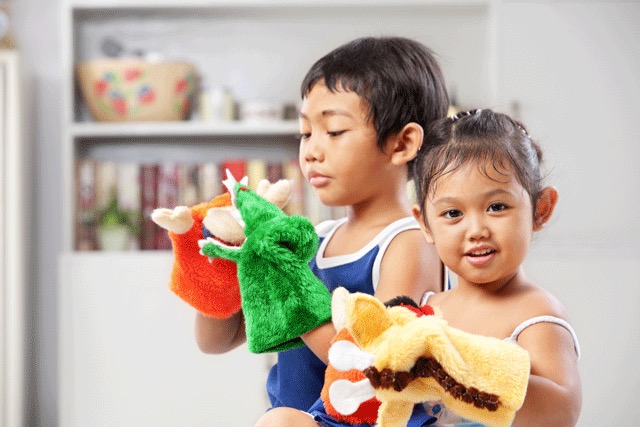
What Puppets Can Mean to Children
Part of the appeal of puppets is that they can “behave” like people while not exactly being people.
-
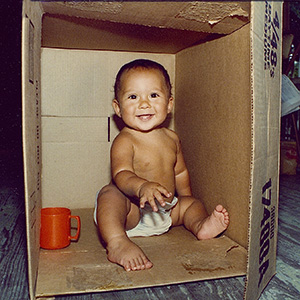
Science Play with an Award-winning Toy
Generations of children have played with cardboard boxes. Many families have stories along the lines of “We got him [name of a popular toy], but he liked the box better.”
